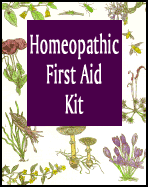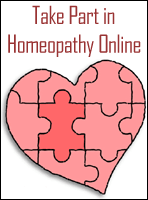Most repertory making is the compiling of a working index of the materia medica, and because of its magnitude has long ago passed beyond the powers of a single mind. Even major works of this kind soon fall behind developments, so we now use a form of analysis which assembles the most salient and useful points into rubrics, which are then arranged in a flexible and easily grasped schema.
Illness may present any possible combination from among many thousands of symptoms, although as a matter of fact such extreme variability of disease expression is the exception; were it otherwise the problem must remain practically unsolvable. Most of its symptom groups are referable to particular diseases, organs and individuals. The former two remain fairly constant, at times however exhibiting very pronounced diseases phases, thereby beclouding the diagnosis and leading to organopathic, pathological or diagnostic prescribing of a makeshift nature; ultimately a most pernicious thing.
Of far greater importance are the individualistic symptom groupings, for they generally show forth the real man, his moods, his ways and his particular reactions. Occurring singly, in small groups or at indefinite intervals, they often seem to lack distinctive support, hence are more difficult to link together and intercept. This encourages palliative medication as well as makes real curing much harder. On the other hand cases presenting very numerous symptoms are hard to unravel, especially when brooded over by an active imagination.
The final analysis of every case, therefore, resolves itself into the assembling of the individualistic symptoms into one group and collecting the disease manifestations into another, then finding the remedy which runs through both, while placing the greater emphasis on the former. This method applies to repertory making just as fully as it does to case taking and prescribing. Therefore the over-large rubrics of our repertories are likely to be more useful to occasional confirmatory reference, than for the running down of the final remedy.
By eliminating all but the two highest grades of remedies in the large, general, and including all the confirmed ones in the smaller rubrics, we bring to the fore the largest possible number of characteristics. Each case, of even the same disease, presents a slightly different alignment of symptoms, particularly, which is usually but an outcropping of another link in the chain of individualistic symptoms belonging to the life history of the patient. This way of looking at the matter presupposes the taking of a pretty thorough case history, but furnishes a therapeutic key to almost every sickness for a long periods of time.
While the grading of symptoms largely depends upon their discovery and the extent of subsequent confirmation obtained for every one of them, their spheres of action are also of vast importance, and may not be safely left out of the calculation, because they go far toward certifying the choice of the remedy. To depend wholly upon a numerical concurrence is indeed fallacious, and yet every use of the repertory implies the presence of this factory, to some extent; but it is greatly overshadowed by the relative standing of the individual symptoms.
In the abstract the same symptom may have the highest standing in one case and the lowest in the next, all depending upon the general outline of the case, as delimited by the associated symptoms. Viewed from this standpoint, symptom grading, as found in the repertories, is unsatisfactory as well as of lesser importance, and yet has great value. The relative value of a given symptom depends almost wholly upon its setting, therefore changes from case to case, and is only finally determined as to its reportorial standing by numerous clinical trials. If I apprehend the matter rightly, the original pathogenetic symptom is really only a hint of what it may possibly develope in the future as determined by successive testings.
A case in point : Intolerance of clothes about the neck is found in the provings of quite a number of remedies, but it very decidedly outranks them all, and has really only a few straggling followers. This is a particular which accentuates the values of Lachesis over Glonoinum if the patient is intolerant of heat, but if sensitive to cold, Sepia takes the lead.
Experience leads to the conclusion that the patient's actions and what he says of himself, are the highest import and may not be lightly set aside. Just so do drugs, in their general action, exhibit this or that predominant phase, and when one finds its counterpart in the other, the simillimum has been discovered, provided the remedy contains the characteristics of the case, in hand, also. For example we do not think of Phosphoric acid for excitable, or Coffee for lethargic patients, unless the individualistic symptoms call fore these remedies in the most positive way, an unlikely contingency. The quality of the general reaction greatly influences symptom values, be they pathogenetic or clinical.
In a new proving each prover reacts to only a part of the perspective picture, and we properly sense the whole only by seeing all the parts as a compound unit, exactly as we see it in disease, the arrangement never being precisely the same, in either case.
The interrelation of effects always brings out a certain demeanor or general reaction. It is nature picturing forth her demands in the oldest and most flexible of languages, than can be thoroughly understood only by also taking fully into account the context.
The whole trend of education leaned more and more toward fixity, until first Madame Curie and then Einstein demonstrated the essential fallacy of such a position. In this connection I would call your attention to Hahnemann, his philosophy and his materia medica, in the practical application of which fixedness is reduced to the observation of certain natural working rules which underlie successful medical practice and that these are essentially of a flexible nature. |


